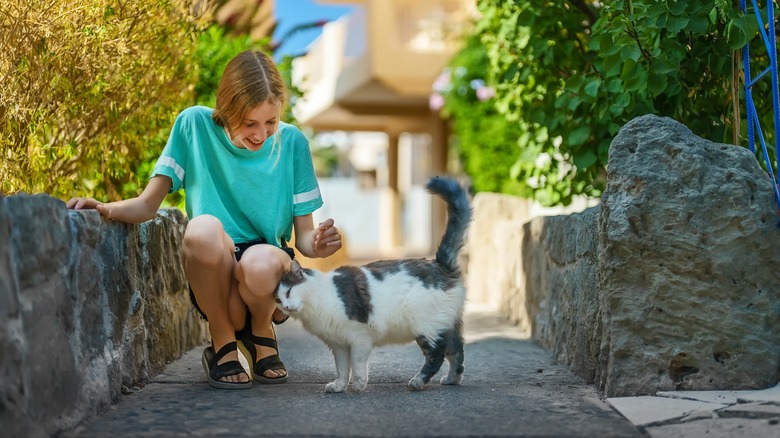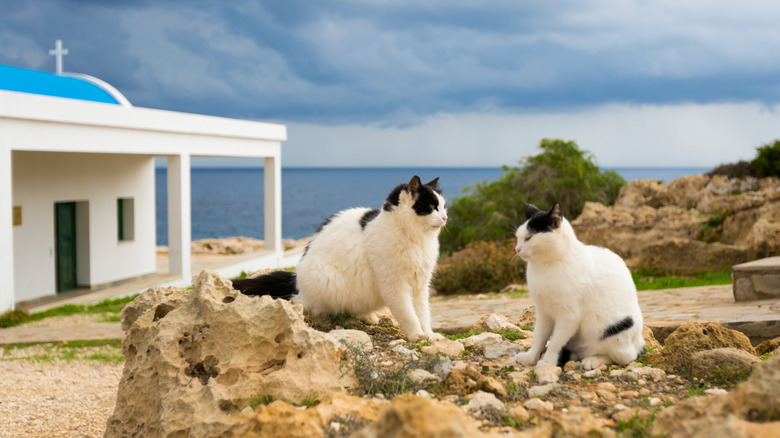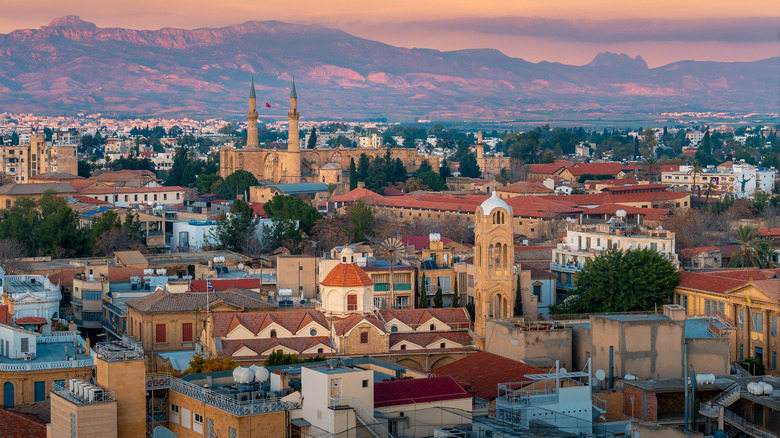The Gorgeous Mediterranean Island Where Cat Lovers Will Absolutely Thrive
Greek Cypriot poet Leonidas Malenis once called Cyprus, an island in the eastern Mediterranean, a "golden-green leaf thrown into the sea," maybe referring to its golden sand and the deep-green Calabrian pine forests that blanket its mountains. Whatever he meant, the island is indisputably lovely. It also has a rich historical legacy due to its location at the crossroads of Europe, the Middle East, and Africa. Inhabited since the 10th millennium B.C., it's witnessed a parade of rulers, from the Egyptians and Persians to the Romans, Crusaders, and Turks, each civilization leaving its mark on the island's language, cuisine, architecture, and traditions.
Here are a few fascinating facts about Cyprus: Cleopatra once ruled over the island, which was given to her by Julius Caesar around the beginning of the first millennium. Commandaria, a sweet dessert wine made in Cyprus, was declared by the Guinness Book of World Records to be the oldest manufactured wine in the world, dating back to 2000 B.C. In addition, the first known domesticated cat was found in one of the island's archaeological burial sites estimated to be 9,500 years old. Cypriot cats continue to flourish today, and cat lovers who visit are sure to make a few feline friends among the 1.5 million who live on the island.
Cyrpiot cats
Feline inhabitants of Cyprus are treated with respect and affection by locals and visitors alike. Some resident cats cohabitate with their human companions, while others live in one of the island's well-kept sanctuaries. Malcolm's Cats is one of the largest shelters in Cyprus, home to around 200 felines who receive regular veterinary care and are attended to by a staff of loving volunteers. At St. Nicholas of the Cats monastery, the nuns feed and watch over several hundred cats, descendants of the fierce furballs who were brought to the monastery in A.D. 327 by Saint Helena to chase away hordes of venomous snakes. According to local legend, Saint Helena's cats were trained to respond to two bells: one signaled it was time to eat, and the other that it was time to hunt the poisonous serpents.
For the ubiquitous street cats, numerous feeding stations are set up and maintained around the island. Some towns even have their own "cat lady" who nurtures the colonies of feral cats. While most people find the street cats to be quite endearing, their numbers have gotten a bit out of hand — cats now outnumber people on the island. The Cypriot government and various animal welfare organizations are trying to get the situation under control by implementing spaying and neutering programs. Cat lovers who want to support these efforts can consider volunteering at a local non-profit such as Malcolm's Cats or making a donation.
Other things to see and do on Cyprus
Besides frolicking with the sweet kitties, Cyprus visitors will find a multitude of other things to see and do across the island. Be sure to check out the fascinating capital city of Nicosia, the world's last divided capital city, with separate Greek and Turkish sectors. Those who want to learn more about ancient history should head to one of the island's extraordinary archaeological sites, such as Kourion, an ancient city-kingdom on a hillside near the sea with well-preserved ruins, including a Greco-Roman theater. Tombs of the Kings is a UNESCO World Heritage Site with lavish underground chambers that served as the burial site for wealthy aristocrats.
For beach lovers, the coastline around Cyprus does not disappoint. Nissi Beach, one of the island's most popular beaches, is a crescent of golden sand bordering remarkably clear and shallow turquoise waters that are ideal for swimming. Foodies will delight in the local cuisine, a centerpiece of the island's varied and vibrant culture. Some local specialties to sample on your culinary journey are souvla (meat skewers) and sheftalies (meatballs), and for vegetarians, moutzentra (brown lentils and rice), and agrelia (fried wild asparagus with eggs). Be sure to share any of your meat leftovers with your new feline friends.


